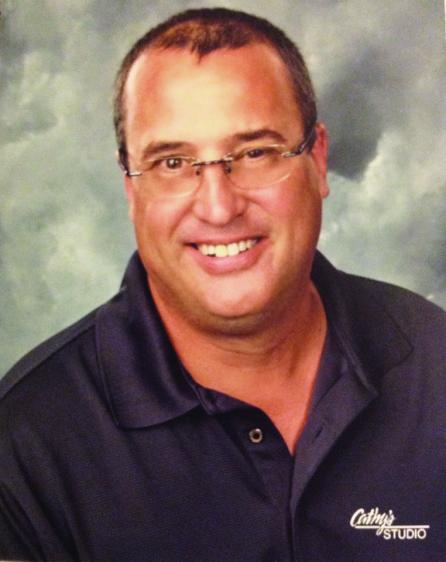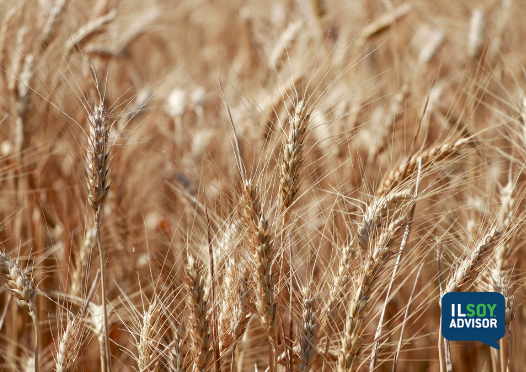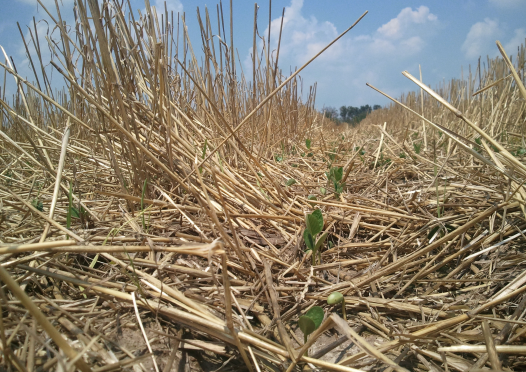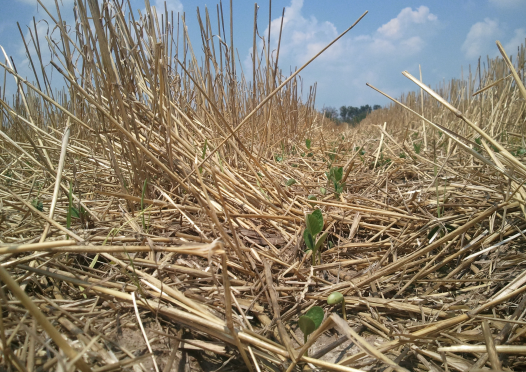ILSOYADVISOR POST
What Happened to the Double Crop Soybeans This Year?
2016 was a good year for double cropped soybeans.
For those that had double crop soybeans this year the question is “What happened?” In many of the reports I have received, the answer is very high-yielding beans. In some cases, the double crops have out-yielded the full season beans. It is not uncommon to hear reports of double crop bean yields of 50 to 70 bushels per acre—double what we normally expect. So, what exactly happened this year that created those big yields?
First off, we had a relatively early wheat harvest. And that wheat harvest occurred during the driest time of the year here in southern Illinois. After a very wet April and May, June was very dry. By the time the wheat was cut and double crop planting began, soil conditions were almost perfect for no till planting. The only issue was the green straw that many had to contend with. If you could have cut the straw or waited until later in the day to plant you were planting into near perfect soil conditions.
Secondly, soybeans established near perfect stands due to good soil conditions, something unheard of with double crop. Unless stand loss occurred in July or August with the record rainfall, there were no holes in the field and the stands were as good as the conventional fields. So, we had good stands to start from and we planted early.
Next was a combination of things, all contributing to high yield. July and August were wet, with lots of rain. The crop never lacked for moisture and unless the soil was saturated, water was never an issue. We also had all our heat in July and early August when the crop was young—it could tolerate that heat due to available moisture. Again, the crop could handle the heat and water thanks to good root structure from the ideal planting conditions in June. Additionally, we had about half the solar radiation in July and August that we normally have. Days were hot, with temps in the 90’s but cloudy. The very thing that hurt our corn crop helped the beans.
Finally, as we entered September we had moderate temperatures, adequate moisture and lots of sun shine. At this point many producers applied fungicides to their double crops because the crop looked so lush and healthy. This further added to yield in many locations. Additionally, the crop matured going into October instead of dying prematurely. This was evidenced by the very slow turn from green leaves to yellow mature plants over a three-week period in some cases instead of the 7-10 days in a “normal” year.
While we can’t point to any one thing as being the catalyst to our high yields, we can see what the perfect storm looks like. Planting date matters; soil conditions at planting matter even more. Soil moisture counts as well as day length and how fast fall gets here. Soybean producers should be encouraged to learn from this year and figure out what part of the high yield equation they can control in future years. This was an excellent double crop year and an excellent year to take notes and learn for 2017.
Kelly is serving as the Illinois Soybean Association Double-Crop Specialist. He was raised on the family farm in Benton, Illinois and graduated from Southern Illinois University (SIU)-Carbondale with a BS in Agriculture Education and Mechanization, and a Master’s of Science (MS) in Plant and Soil Science. Kelly has spent 25 years as a soil fertility agronomist and precision agriculture consultant in southern Illinois while also spending 4 years as a Farm/Agronomy Manager and GIS Coordinator for a large farm in southeastern Illinois. He is a Certified Professional Agronomist and a Certified Crop Advisor.





Comments
Add new comment